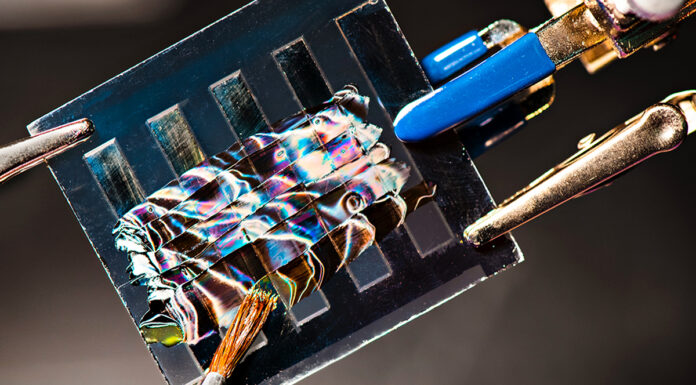Imagine a world where artificial intelligence (AI) is used to help us solve some of the biggest challenges facing humanity today, such as climate change, inequality, and poverty. A world where AI systems are designed and operated in a way that is sustainable and ethical. This is the world that green AI, or green artificial intelligence, is working to create.
Green AI is a rapidly developing field that is poised to change the way we think about and use AI. By developing artificial intelligence systems that are more efficient, less resource-intensive, and more aligned with human values, we can create a more sustainable future for everyone.
But can green artificial intelligence serve as a pathway to net zero emissions? Let’s find out!
What is Green AI, and Does it Protect Our Environment?
Green AI is a field of research that focuses on creating and deploying AI technologies that are environmentally friendly and sustainable. This includes developing AI algorithms and systems that are more efficient in terms of energy consumption and computational resources, as well as using artificial intelligence to promote sustainable practices in a variety of sectors.
For example, AI can be used to control HVAC systems and optimize traffic flow in buildings to reduce energy consumption. In agriculture, AI can help farmers reduce their reliance on pesticides and fertilizers and improve crop yields while minimizing resource use.
Additionally, this technology can be used to create more efficient and effective systems for sorting and disposing of waste, detecting deforestation, tracking illegal fishing activity, and monitoring air pollution levels in the areas of waste management and natural resource monitoring.
These real-life applications effectively reveal that Green AI has the potential to make a significant contribution to the fight against climate change and environmental degradation. But there is more to it than that. Let’s take a look at some real-world examples of how green AI is already being used to make a difference in the world.
Sustainable Artificial Intelligence (AI) Solutions
- Google’s DeepMind AI
- IBM’s Watson AI
- The World Economic Forum’s AI
- The Ellen MacArthur Foundation’s Circularity Accelerator
- BoweryOS
Google’s DeepMind AI
DeepMind is a British artificial intelligence subsidiary of Alphabet Inc. (Google’s parent company). It is known for developing a number of state-of-the-art AI algorithms, including AlphaGo, AlphaFold, and AlphaZero.
This firm has developed an AI system that can optimize the cooling of data centers, which can significantly reduce energy consumption and carbon emissions. The AI system works by predicting the temperature of data center servers based on real-time data from sensors. It then intelligently adjusts the cooling system to ensure that the servers remain within their optimal temperature range while minimizing energy usage.
In a pilot study, DeepMind’s AI system was able to reduce the energy consumption of a data center by over 30%. This translates into a significant reduction in carbon emissions as well as cost savings for the data center operator.
IBM’s Watson AI
IBM Watson AI is a cognitive computing platform that uses artificial intelligence (AI), including machine learning, natural language processing, and reasoning, to analyze large datasets of information and generate insights.
One example of how IBM Watson AI is being used to promote sustainability is in the development of smart grid technologies. Smart grids use AI to collect and analyze data from sensors throughout the electrical grid, which allows utilities to optimize energy distribution and reduce waste.
Similarly, it can be used to develop more efficient agricultural practices. For example, Watson can be used to analyze soil data and weather forecasts to recommend the best planting and harvesting times, irrigation schedules, and fertilizer applications.
The World Economic Forum’s AI
The World Economic Forum’s AI and Sustainability Initiative aims to harness the power of artificial intelligence (AI) to accelerate progress towards the United Nations Sustainable Development Goals (SDGs). AI has the potential to transform many industries and sectors, and the WEF is working to ensure that AI is used to create a more sustainable future for all.
Meanwhile, the initiative works with stakeholders from government, business, and academia to develop and deploy AI solutions that can address some of the world’s most pressing sustainability challenges, such as climate change, biodiversity loss, and poverty.
The Ellen MacArthur Foundation’s Circularity Accelerator
This is a program that supports early-stage startups and non-profit organizations that are developing innovative solutions to accelerate the transition to a circular economy. The program provides participants with access to mentorship, resources, and networking opportunities to help them scale their businesses and impact.
The circular economy is a system that aims to eliminate waste and pollution, circulate products and materials (at their highest value), and regenerate nature. It is a regenerative approach to business that can assist in addressing some of the world’s most pressing environmental and social challenges, such as climate change, biodiversity loss, and resource scarcity.
BoweryOS
BoweryOS’s real-time environmental control uses artificial intelligence (AI) to optimize the growing environment for each plant, saving water and energy. For instance, AI can automatically adjust the humidity and temperature of the growing chambers based on the plants’ needs, ensuring that they are not overwatered or stressed. This can lead to significant reductions in water and energy consumption, as well as improved crop yields.
Interestingly, BoweryOS has been shown to reduce water consumption by up to 95% compared to traditional farming methods. This is a practical and sustainable AI solution that can help reduce the environmental impact of agricultural practices.
Green AI: A Pathway to Net Zero Emissions?
Green artificial intelligence can be used to optimize energy production and consumption, decarbonize industrial processes, transform transportation, improve agricultural practices, and develop new climate solutions.
This evolving technology can be used to develop new energy-efficiency technologies, such as smart thermostats and appliances. It can also help consumers reduce their energy consumption by providing them with personalized recommendations and insights. Additionally, green AI can be used to optimize the use of materials and resources in manufacturing processes, develop new renewable energy-based industrial processes, develop more efficient vehicles, such as electric vehicles and self-driving cars, and more.
There is no doubt that green AI is a powerful tool that can be used to accelerate the transition to a net-zero emissions future. It is a critical tool in the fight against climate change, as it is effective in reducing our reliance on fossil fuels, improving energy efficiency, and developing new sustainable technologies.










